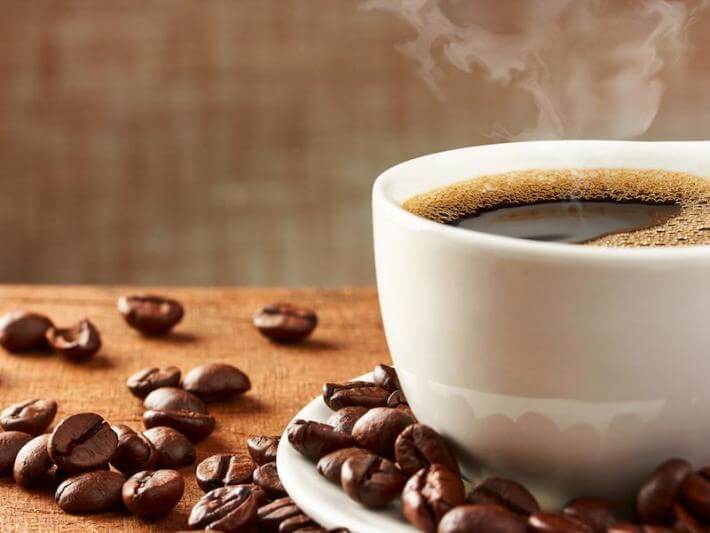Let’s start with the word “coffee” itself. It comes from the Turkish word “kahveh,” and it seems to have come into European languages around 1600. (6) That’s because coffee beans were first brought from North Africa and the Middle East into Italy in 1615, and then into France in 1644. There, the Turkish ambassador to France, Suleiman Aga, helped to make coffee the “it” beverage in the court of Louis XIV. (4)
The European aristocracy became enchanted by the thick, hot beverage. And the rest, as they say, is history.
Back then, the word “coffee” appeared in a lot of different forms: chaona, cahve, kauhi, cahu, coffa, and caffa. Eventually, these all settled down into the “coffee” we know today.
Battery Acid, Crumb Coffee, and Unicorn Frappuccinos
Over time, we’ve come to know “coffee” by a bunch of different terms. We’ve called bad or poorly made coffee “battery acid,” “belly wash,” and “sludge.” (4) And a certain brand’s coffee is sometimes called “charbucks” by those don’t appreciate really dark-roasted coffee.
We’ve called fake coffee “Boston coffee,” “Canadian coffee,” and “crumb coffee.”
We’ve called fake coffee “Boston coffee,” “Canadian coffee,” and “crumb coffee.” These so-called coffees were made in the U.S. after the Revolutionary War, when Americans were abstaining from tea because of high British taxes – yet also suffering from high coffee prices. These three coffee substitutes were made, respectively, from rye, peas, and burnt bread. (4)
I can’t really imagine how they would have tasted.
Today, we often refer to coffee by the way it’s made: drip coffee, press coffee, moka pot coffee, instant coffee, and siphon coffee, for example. (3)
Americans have borrowed the British expression “a cuppa,” referring to a cup of tea, and now use it willy-nilly to refer to a cup of coffee. (5)
And of course, we have all the made-up names for coffee we could ever want, courtesy of today’s gourmet coffee shops: unicorn frappucinos and caramel flan machiatos are just two of many.
Why Do We Call Coffee a ‘Cup of Joe’?
One of the most common ways we’ve referred to coffee in the past century is to call it a “cup of joe.” Why do we do that? The real answer is that we’re not quite sure, but there are some theories.
One theory is that it’s named after Josephus Daniels, a U.S. Secretary of the Navy. In 1914, he banned alcohol from being served on Navy ships. After that, coffee would have been the strongest drink allowed onboard. So, the theory goes, sailors started calling coffee “Joe” to spite Secretary Josephus.
The problem is most alcohol had already been banned on Navy ships 50 years earlier. A daily ration of grog was once normal on Navy ships, but an 1862 edict put that practice to rest. So by 1914, the only hard stuff that would have been left was wine served in the officer’s mess. So Josephus’ ban wouldn’t have had much effect on the average … well … the average joe.
Another theory is that this name for coffee is based on an African-American spiritual written by Stephen Foster, called “Old Black Joe.” There is a comic strip from 1911 that describes this phrase as meaning “coffee without milk.” The problem is the comic is making a joke, suggesting that when that song is played in a restaurant, it means a customer wants coffee. The song itself never mentions coffee. And, the song was popular way back in the 1860s. So it doesn’t make sense that it generated a slang term that wasn’t popular until the 1930s.
Java + Mocha = Jamoke
The most likely reason a “cup of Joe” means a “cup of coffee” is that “joe” is a shortened form of “jamoke,” which is a combination of the words “java” and “mocha.”
Remember how I said that coffee was exported from North Africa and the Middle East starting in the 1600s?
Well, Dutch traders at that time wanted to get in on the action. They began moving into Southeast Asia and Indonesia and setting up coffee plantations on islands like Sumatra, Bali, and Java. They probably used the term “java” to refer to coffee beans grown on that island. They were essentially the original advertisers of “single-origin coffee.”
For some reason, the term “java” took hold with the public. Over time, it came to mean coffee generically – not just coffee from that island.
"Traders buying coffee from Yemen had to stop in the port city of Mocha, and from there, they often sailed on to Java".
At the same time coffee was being produced in Indonesia, it was also being produced and traded in Yemen. That’s where arabica coffee beans originated; they’re native to both Yemen and Ethiopia. Traders buying coffee from Yemen had to stop in the port city of Mocha, and from there, they often sailed on to Java. When they combined the beans from those two countries, they created “Mocha Java” – also known as “jamoke.”* And the shortened version of that, of course, is “joe.” (1)
That’s our best guess as to why a cup of coffee is also called a “cup of joe.” I hope you enjoyed a cuppa today, and I hope that it was more unicorn than sludge.
*Just like the original “coffee,” “jamoke” has seen several alternative spellings across the years: "jamoca," "jamoch," "jamok," and "jamoka" have all turned up.
Sources
- Driftaway Coffee. Why is Coffee Called Java? Accessed September 23, 2019.
- Green, Jonathon. Joe, jamoke. Green’s Dictionary of Slang, digital edition. Accessed September 23, 2019.
- Home Grounds. The Complete Guide to Coffee Brewing Methods. Accessed September 23, 2019.
- Mariani, John. Encyclopedia of American Food and Drink. Bloomsbury, USA, 2013.
- Not One-Off Britishisms. Cuppa. Accessed September 23, 2019.
- Oxford English Dictionary, digital edition. Joe. Accessed September 23, 2019.
- Snopes.com. Why is coffee called a “cup of Joe”? January 19, 2009. Accessed September 23, 2019.
